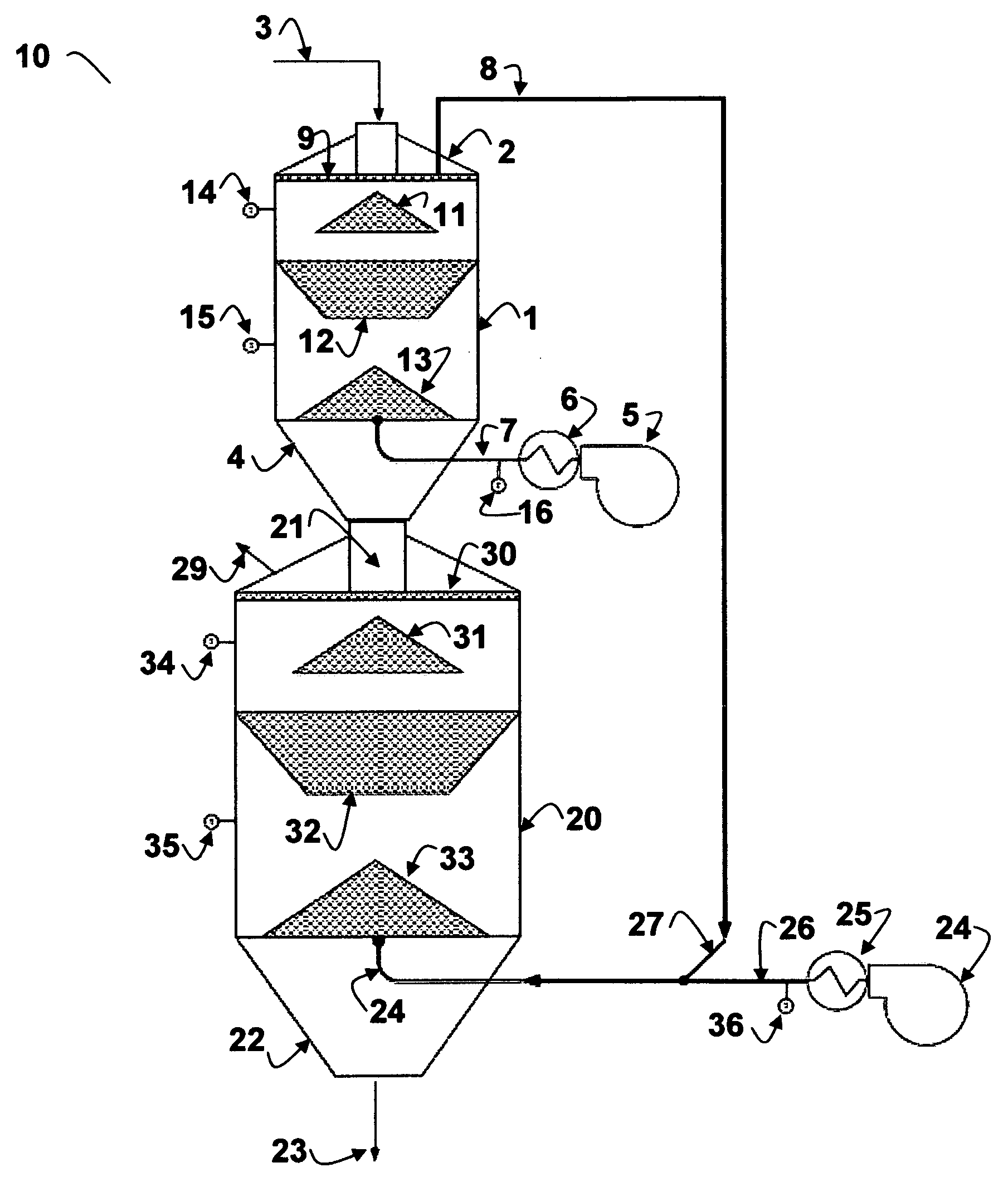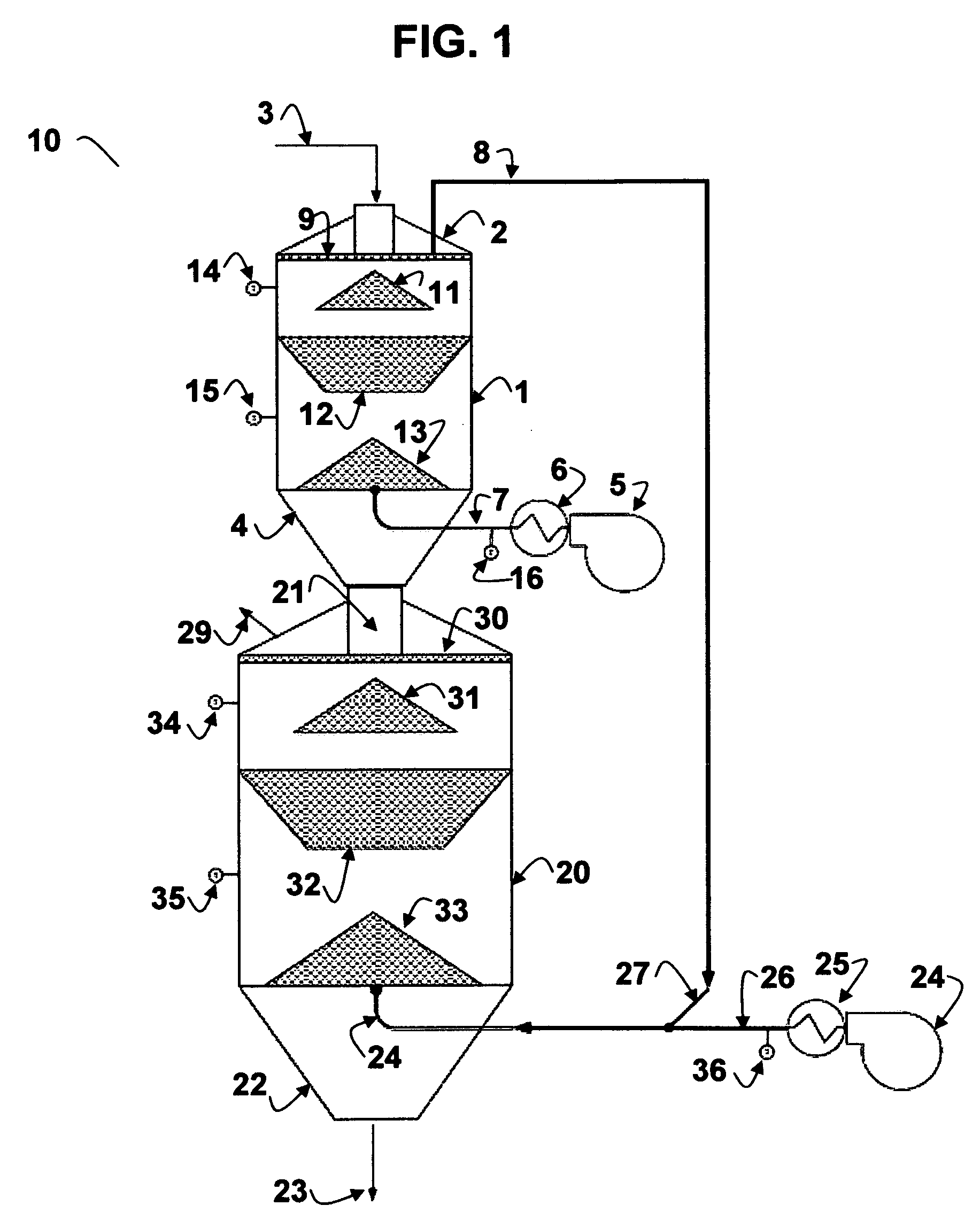Two-stage static dryer for converting organic waste to solid fuel
a static dryer and organic waste technology, applied in the direction of lighting and heating apparatus, furnaces, separation processes, etc., can solve the problems of not being suitable for organic materials, reducing the potential fuel value of pelletized hog manure, and material not being economically combusted to generate heat or power. the effect of energy efficiency
- Summary
- Abstract
- Description
- Claims
- Application Information
AI Technical Summary
Benefits of technology
Problems solved by technology
Method used
Image
Examples
example
[0035]The following example for converting dewatered dairy waste into solid fuel provides representative operating conditions for the invention. Dairy waste that has been dewatered and pelletized has a moisture content of 58%. The dry solids in the dairy waste have a heat capacity of 0.70 BTU / lbmass-° F. (2,900 J / kg-° C.). The heat capacity of the moist pellets composed of water and dry dairy waste solids is 0.87 BTU / lbmass-° F. (3,600 J / kg-° C.). Ambient air is 75° F. (23.9° C.), and relative humidity is 75%. In order to dry the pelletized organic dairy waste to 10% moisture, 643 BTU / lbmass of pellets (1.5 MJ / kg) is added as thermal energy to the inlet air that is fed into the upper, hot-temperature dryer, resulting in the following operating conditions:
MoistUpperPartiallyLowerBritish Engineering UnitsPelletizedHot-AirDriedWarm-AirDriedPellets and DryerOrganic WasteDryerPelletsDryerPelletsPellets, % Moisture58%48%10%Temperature, ° F.75313313140140Air, lbmass / Pellet, lbmass3.852.804...
PUM
 Login to View More
Login to View More Abstract
Description
Claims
Application Information
 Login to View More
Login to View More - R&D
- Intellectual Property
- Life Sciences
- Materials
- Tech Scout
- Unparalleled Data Quality
- Higher Quality Content
- 60% Fewer Hallucinations
Browse by: Latest US Patents, China's latest patents, Technical Efficacy Thesaurus, Application Domain, Technology Topic, Popular Technical Reports.
© 2025 PatSnap. All rights reserved.Legal|Privacy policy|Modern Slavery Act Transparency Statement|Sitemap|About US| Contact US: help@patsnap.com


